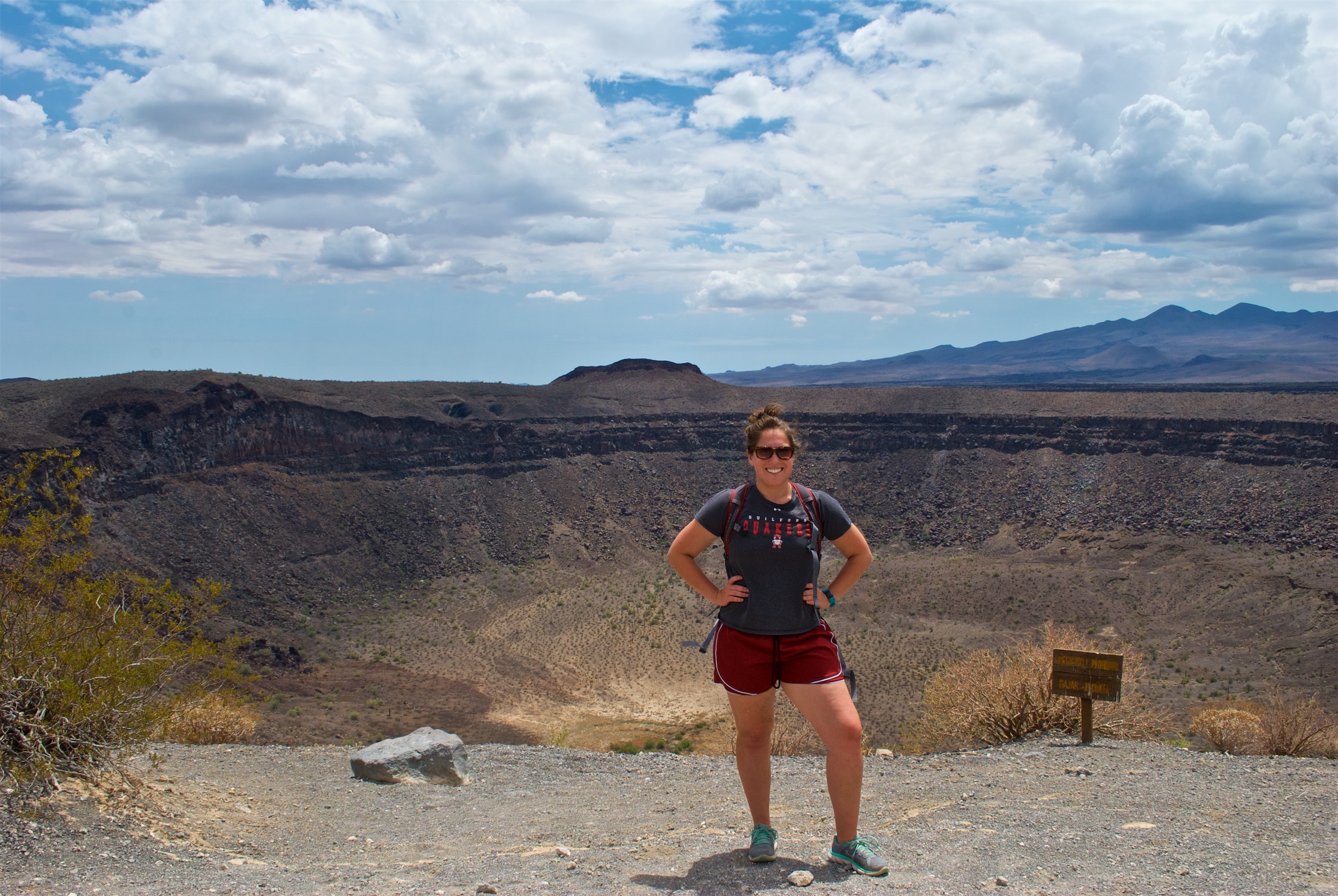Ranked number 4 of Mexico’s top 13 natural marvels, the El Pinacate y Gran Desierto de Altar Biosphere Reserve was designated a UNESCO World Heritage Site in 2013. Littered with maar craters and volcanic rocks, its lunar landscapes are so unique that NASA trained its astronauts for the moon landing at El Pinacate back in the 1960s and 70s. The reserve is also the hottest and driest area in the Sonoran desert. Summer temperatures routinely reach 115 to 120 degrees Fahrenheit (44-48 C). Average annual rainfall is only 3 to 4 inches (75-100 mm).
When my sister and I traveled to El Pinacate last week, we got really lucky with the weather. The summer monsoon moisture was firmly in place over the northwestern part of Sonora, so the cloud cover kept temperatures right around 100°F. In fact, it even spat rain on us a couple times.
La Ruta Cráteres: A Spectacularly Unique Look at the Sonoran Desert
The Ruta Cráteres is the main loop road through the reserve. It’s a 76 km dirt track that has stops at three of the park’s most famous craters. Other than a some pretty serious washboarding in places, the road was in pretty good shape. It’s probably passable in a passenger car if you knew what you were doing. However, I would recommend something with high clearance and a rugged suspension such as a truck or SUV. Please obey the posted speed limit of 40 km/h or 25 mph.
When you first arrive at the park, you must check in at the Estación Biológica, which is just a ranger station. The park entrance is at kilometer 52 on Federal Highway 8. It’s about 50 km south of the Lukeville/Sonoyta border crossing and about 40 km north of Puerto Peñasco. Pay the entrance fee to the park (60 pesos when we went), and give the rangers your vehicle information. Tell them exactly the route you’re going to take and where you’re stopping. That way, if you have a vehicle breakdown or get stuck, they know exactly where to look for you. The rangers all speak both English and Spanish, and were extremely knowledgeable, warm, and welcoming.

Cráter El Elegante: El Pinacate’s Most Famous Crater
Our first stop was at the reserve’s famous Cráter El Elegante, located at kilometer 27 of the Ruta Cráteres. The craters at El Pinacate are all maar craters. Violent volcanic explosions underground cause the ground to collapse in from the top and fill the void left by the explosion. Crater Lake National Park in Oregon is also a maar crater. The Cráter El Elegante is 1,600 meters (roughly a mile) in diameter, about 250 m (800 ft) deep, and is 32,000 years old. There is a hiking trail around the perimeter of the crater, but you cannot go down inside the crater. We did not hike the perimeter because it was so hot.

Stop at Cráter Cerro Colorado
Our second main stop was at Cráter Cerro Colorado, took on more of a cinder cone appearance. While it wasn’t your classic crater the way El Elegante is, it was unique and beautiful in its own way. It actually looks a lot like Ayer’s Rock in Australia as you approach it from the south.

The drive from Cráter Cerro Colorado back to the Estación Biológica was a spectacular drive out of the volcanoes. As the soil shifts from the black volcanic sand back to the traditional white/tan sand of the desert, you pass through a saguaro and cholla forest, which truly epitomizes an authentic desert experience.


Visit the Schuk Toak Visitor’s Center
After spending the night in Puerto Peñasco, we stopped at the Schuk Toak Visitor’s Center on our way home. The visitors center is quite a ways south of the Ruta Cráteres, sitting just north of Puerto Peñasco. The visitors center runs 100% on solar power, and provides plenty of information about the history of the preserve. Though most of it is in Spanish, there are also a couple of short guided walking trails behind the building. It is also home to the only sand dunes in the Sonoran Desert. However they close the dunes in the summer because of the extreme heat.



If you are ever in the Puerto Peñasco area, I highly recommend a visit to the El Pinacate Biosphere Reserve. If you want in interesting perspective, hop across the border and visit the Organ Pipe Cactus National Monument in Arizona. While El Pinacate focuses on geology, Organ Pipe focuses on biology and botany. Whatever you decide to do, you won’t be disappointed with the sights, sounds, and scenic views.